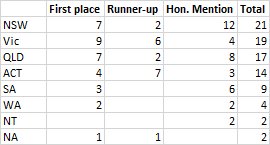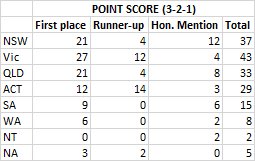Over the last two and a half years I've been deep in a startup using generative artificial intelligence (AI that writes text) to help solve the challenge organisations face in producing and consuming useful content.
This has given me practical insights into the state of the AI industry and how AI technologies can be successfully - or unsuccessfully - implemented within organisations to solve common challenges in the production, repurposing and reuse of content.
So, with a little prompting from the formidable Pia Andrews, I'm taking up blogging again at eGovAU to share some of my experience and insights for government use of AI.
I realise that Australian governments are not new to AI. Many agencies have been using various forms of AI technologies, directly or indirectly, to assist in understanding data or make decisions.
Some may even include RPA (Robotic Process Automation) and chatbots - which in my humble opinion are not true AI, as they both are designed programmatically and cannot offer insights or resolve problems outside their programmed parameters and intents.
When I talk about AI, my focus is on systems based on machine-learning, where the AI was built from a body of training, evolving its own understanding of context, patterns and relationships.
These 'thinking' machines are capable of leaps of logic (and illogic) beyond any programmed system, which makes them ideal in situations where there are many edge cases, some of which can't be easily predicted or prepared for. It also places them much closer to being general intelligences, and they often exhibit valuable emergent talents alongside their original reasons for being.
At the same time machine-learning is unsuitable for situations where a decision must be completely explainable. Like humans it is very hard to fully understand how a machine-learning algorithm came to a given conclusion or decision.
As such their utility is not in the realm of automated decision-making, but rather is assistive by encapsulating an evidence base or surfacing details in large datasets that humans might overlook.
As such machine-learning has vast utility for government.
For example,
- summarizing reports,
- converting complex language into plain,
- writing draft minutes from an intended purpose and evidence-base,
- extracting insights and conclusions from large research/consultation sets,
- crafting hundreds of variants to a message for different audiences and mediums,
- developing structured strategy and communication plans from unstructured notes,
- writing and updating policies and tender requests,
- semantically mapping and summarizing consultation responses,
- developing programming code, and
- assisting in all forms of unstructured engagement and information summarization/repurposing.
As such machine-learning is as an assistive and augmentation tool. Extending the capabilities of humans by doing the heavy lifting, rather than fully automating processes.
It's also critical to recognise that AI of this type isn't the sole purview of IT professionals and data scientists. Working with natural language AIs, as I do, is better supported by a strong business and communications skillset than by programming expertise.
Designing prompts for an AI (the statements and questions that tell the AI what you want) requires an excellent grasp of language nuances and an extensive vocabulary.
Finetuning these AIs requires a strong understanding of the context of information and what constitutes bias, so that an AI is not inadvertently trained to form unwanted patterns and derive irrelevant or unneeded insights.
These are skills that 'business' folks in government agencies often possess to a far greater degree than most IT teams.
So through my eGovAU blog, I'm going to be regularly covering some of the opportunities and challenges I see for governments in Australia seeking to adopt AI (the machine-learning kind), and initiatives I see other governments adopting.
I will also blog occasionally on other eGov (or digital government) topics, however as this is now well-embedded in government, I'll only do so when there's something new I have to add.















